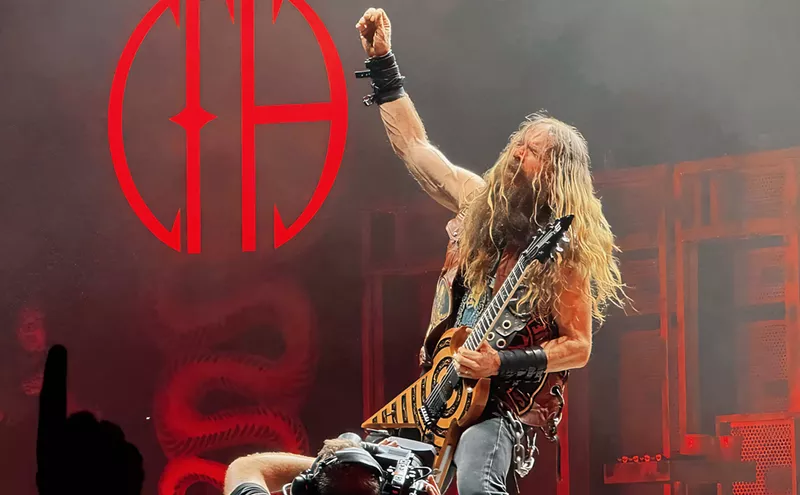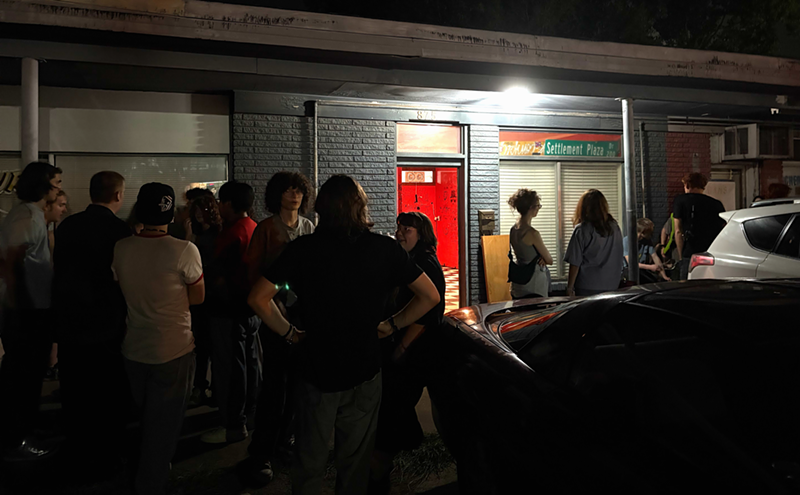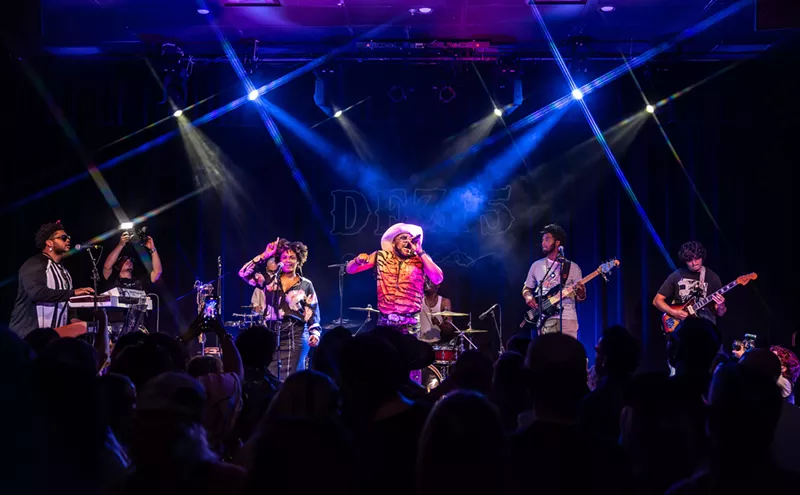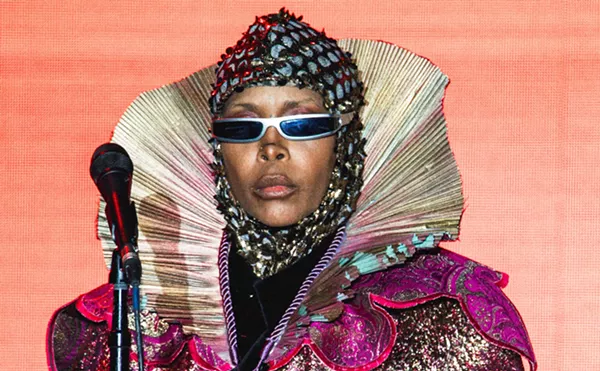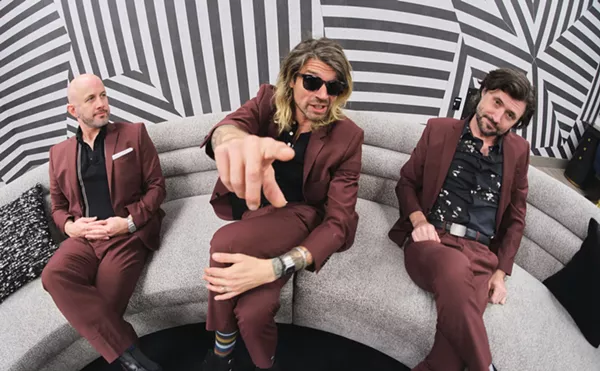Flash forward to 1995, when Mark, his name now properly modified by "Keyboard" and "Money," leads Biz Markie and the Beastie Boys in a vampy version of Elton's "Bennie and the Jets" on a flexi-disc inserted inside Grand Royal magazine, issue two--the most popular flexi since Lorne Greene dropped "Songs of the Humpback Whale." And now comes '98; as Laker Nick Van Exel gets Greg Ostertagged out near the end of the first half of the monotonous NBA All-Star game, a Madison Square Garden organist holds the moment by swinging into the familiar vamp of, y'bet, "Bennie and the Jets." The repertoire of onetime ballboy Keyboard Money Mark flows through the NBA's internal organ; Mark's arc has made a complete circle.
Make that Mark's ark: This is a guy more comfortable around animals than people; he's the Jack Hannah of rock and roll, but less about that later. He built his ark at his L.A.-area workshop-studio-home, launched it with his '95 solo debut Mark's Keyboard Repair (key animal tracks: "Revolt of the Octopi" and "Insects Are All Around Us"), and kept it afloat with the just-released Push the Button, the wonderfully varied topography of which reflects this musical journeyman's movements.
"I've gone through almost all the different stages a musician in the 20th century goes through," says Nishita, lounging at a Sunset Strip taco shop. "Sitting in a big studio, being on stage, recording at home, playing in bands in a little club, and I don't disappreciate what I've done with the Beastie Boys. But to put it in perspective, I can give you a story.
"Somewhere in the middle of the Ill Communication tour--arena venues, heavy security, bigger places than I'd ever played before--I'm backstage in the concrete dressing room, not performing yet because they're doing a rap set. Then my cue comes up. I'm moseying onto the upstage area, and I notice this bottle that says FOG JUICE on it. And it made me think: I'm in a band that uses fog juice--what happened? A minute ago, I was just walking down the street."
It was Beasties cohort and top producer Mario Caldato who brought Nishita in. The Brazilian Caldato and the Mexican-Japanese Nishita have known each other for more than 20 years, since attending Gardena High School together for, in the former's words, "a second." The two played together in the late '70s schoolhouse-rock outfit Phaze, and then the ska-punk Jungle Bugs, who, in '84, put out a single, "I Don't Dream About You" b/w "Night Today."
"Basically, Mark's doing the same thing he's always been doing," observes Caldato, who pushed buttons from the producer's chair on Nishita's new LP. "He's been writing songs the whole time, and I think the songs he was writing back then were just as good. Some of the songs he does now are old songs from back then. He's always had the music in him. That's the quality that's enabled him to write good songs with good melodies. I always had faith in his music and thought he was always talented, it was just a matter of connections and time."
Nishita's voice is sweetly reminiscent of New Orleans' legendary writer-producer-ivory tickler Allen Toussaint singing "If I Was a Carpenter," except there'd be no ifs were Nishita to sing the tune; he once paid the rent as a trained carpenter. Hence the oft told tale of Caldato bringing Nishita up to repair the Beasties' Paul's Boutique-era Hollywood crash pad, and Nishita sticking around long enough to play a crucial role in the writing process of Check Your Head (which includes the public transportation lament "Mark on the Bus") and Ill Communication--and also long enough to help expand the Beasties' consciousness by introducing them to the music of Nigerian activist Fela Anikulapo Kuti.
"Mark helped open up a whole other side of them that they didn't even know existed: playing funky jams, which became a crucial part of their repertoire," Caldato says. "They had been trying to play Meters-type instrumentals. Mark came in and wrote those songs."
As the Beasties globe-trotted to secure their rock-rap status, one of the live highlights was seeing Nishita's high-jumping stage entrance and the body-rock handstands he performed atop his organ without missing a cue. (Nishita laughs when asked his exact vertical leap: "I'd say the height of a Wurlitzer organ--with a Moog Taurus stacked on top of it.")
But it's possible Nishita would never have displayed such skills had he stuck with another band: Before blessing the Beasties with the hit-making organ vamp to "So What'cha Want," before guesting on records by Jon Spencer and Beck, Nishita jammed with an early lineup of the Wallflowers. And he might never have hit the stage solo had another offer panned out: During Lollapalooza '94, he was invited to join the Verve, then out in their psychedelic wilderness. He never actually jammed with the latter band, though.
"I rode on their bus a lot," he says. "There was a lot of consumption of spirited something. Great rap sessions. Then they broke up. I thought, OK, I'll never get another chance to play with them." Three years later, the Verve reformed, with one difference--an added keyboard player--to massive worldwide success. "And I guess the keyboard player rocks all their string sounds," Nishita says. "The keyboard player is the star of that band now!"
He grins as though he's a member of a guild of keyboard players whose successes are shared equally. If so, Push the Button will give the collective plenty to bask in; never has a self-styled Doctor Dolittle done so many different things so well. The record moves from the tablatronic Indian drone of "Dha Teen Ta" to the moody soul of "All the People" (on which Nishita sings, "Everybody's got their own kind of hope/Some people got dope"), from the aural psychonautics of "Trust" to "Rock in the Rain," a ballad that melds the sentiment of Simon & Garfunkel's "I Am a Rock" with the soul of li'l Stevie Winwood. The wackiest cut is "Power House," its spastic syncopations (taken from a '70s drum machine that featured moving tape loops) quickly flipping to suit the narrative of the song, as explained by Nishita:
"These people come to your house, bust through the door, and tie you to a chair. These other people come in with uniforms and clean your house spotless really fast. At one point, they put down their cleaning equipment and do these crazy aerobic calisthenics to entertain you, because you're a little uncomfortable, being that you're tied up."
While the album boasts such talented guests as Jim Keltner and Sean Lennon, most often Nishita recorded a single basic track, then overdubbed the rest of the parts himself. An exception is the fine ensemble performance on the rolling Latin-jazz "Crowns," recorded at Caldato's in-house studio. The song features the bass of Al McKibbon, who played on Cal Tjader's classic Prestige sides, and the congas and timbales of Eric Bobo, son of Latin percussionist Willie "Spanish Grease" Bobo. Prompted by Nishita's comment that he calls Mario's studio "Rudy Van Gelder West" (in reference to the Blue Note producer's famed New Jersey digs), Caldato breaks it down.
"That was the vibe we were going for," he says. "It was funny. Al McKibbon was in my hallway, Mark and the vibes player were in the living room, Rocco was in the dining area playing drums, and Bobo was in the kitchen playing congas. Everyone had headphones on to hear each other, and I was in the bedroom with all the equipment, rolling tape. Just two easy takes, and that was it."
Back on Mark's ark, the captain fantastic's fascination with animals, real and fictional, remains intact, both on Button and in conversation: "You can trust animals, but you can't trust people," he says. "People are like sharks." He later relates that the deluge of El Nino ("Why does it have to be a bad boy? What's up with La Nina?") has brought a small population of frogs to his doorstep. As for the Performing Chicken (who starred in a cartoon on the cover of his first 10-inch) and Shakes the Monkey (the subject of a skit on Button called "Poor Shakes," in which the hyperventilating simian in question is laughed at by a carnival crowd), Nishita gets downright reverent.
"Me and the chicken and poor Shakes, we're a trio, man," Nishita says, leading into the animal logic of his liberation freeology. "The chicken's in the box. You put the money in, and the light comes on. The chicken pecks at the keyboard a little bit, plays a tune, and then the food comes down the chute.
"I'm trying to free Shakes from the misery of touring and put him in his own element. Get him out of that freak show. The hot lights bother him. He needs a well-balanced diet instead of just peanuts and applause. You can't live off that kind of glamour alone."
It's Nishita's deft anthropomorphic encapsulation of the music biz, dig? But Push the Button is also about progress; if it's a little less woolly than its predecessor, that's the nature of evolution. Nishita is intent on defying August Fruge's maxim: "The better the technology, the less efficient the human use of it." Outside the taco joint, he starts to explain the album title when real life intervenes with its own demonstration.
"Pushing a button seems so innocent, but you can control heavy machinery or drop bombs or order a pizza," he begins. "The human touch...we're not even touching each other anymore, just touching machines and pushing buttons..."
As Nishita speaks, a Lexus and a Benz crash into each other right next to where he stands. He chuckles, cradles his ahi burrito like a wet puppy, and continues:
"Cars, they call them horsepower, but if you had 400 horses you'd have to feed them, brush them, and if they got sick you'd have to nurse them. Meanwhile, people treat other people like machines. They expect people to suppress the emotive parts of themselves, or be highly efficient, or more automated, predictable, and user-friendly. Since people don't have to argue with machines, they get frustrated when they have to have dialogue with you. I've seen examples where machines fail, and people get really pissed off and take it personal. That's why when I push buttons, I always like to think about what's really going on.



